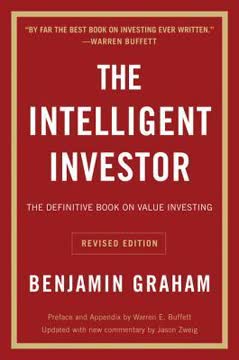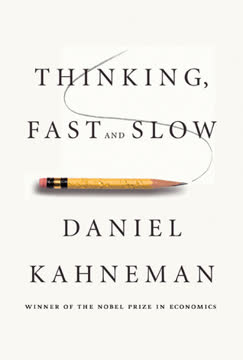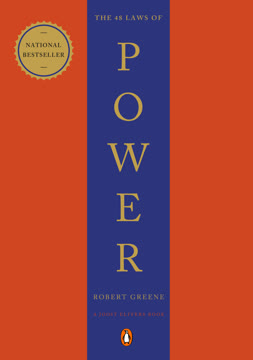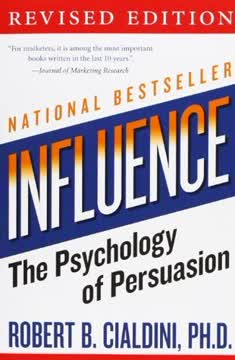اہم نکات
1۔ فعال سننا: مؤثر مذاکرات کی بنیاد
سب سے کامیاب مذاکرات کار وہ ہوتے ہیں جو زبانی، لہجے کی نوعیت، اور غیر زبانی اشاروں کو سمجھتے ہیں جو مذاکرات اور گروہی ماحول میں شامل ہوتے ہیں۔
مؤثر سننا بے حد ضروری ہے۔ اس کا مطلب صرف الفاظ سننا نہیں بلکہ لہجہ، جسمانی زبان، اور پوشیدہ جذبات کو سمجھنا بھی ہے۔ اس جامع انداز سے سننے سے مذاکرات کار اہم معلومات حاصل کرتے ہیں اور اپنے مخالف فریق کے ساتھ تعلق قائم کرتے ہیں۔
- فعال سننے کے اہم عناصر:
- عکس بندی: دوسرے شخص کے آخری چند الفاظ کو دہرانا
- خاموشی: وقفے دینا تاکہ دوسرا فریق مزید وضاحت کرے
- مختصر حوصلہ افزائی: چھوٹے الفاظ جیسے "ہاں" اور "سمجھ گیا" سے دلچسپی ظاہر کرنا
ان تکنیکوں پر عبور حاصل کر کے مذاکرات کار ایسا ماحول پیدا کرتے ہیں جہاں مخالف فریق خود کو سنا اور سمجھا ہوا محسوس کرتا ہے، جس سے مذاکرات زیادہ نتیجہ خیز اور کامیاب ہوتے ہیں۔
2۔ "نہیں" کو سمجھنا: فائدہ اٹھانے اور معلومات حاصل کرنے کا ذریعہ
"نہیں" مذاکرات کی شروعات ہے، اختتام نہیں۔
"نہیں" ایک طاقتور ہتھیار ہے۔ عام تصور کے برعکس، مذاکرات میں "نہیں" سننا فائدہ مند ہو سکتا ہے۔ یہ دوسروں کو محفوظ اور قابو میں محسوس کراتا ہے، جس سے ایماندار بات چیت اور تعاون کے دروازے کھلتے ہیں۔
- "نہیں" کو قبول کرنے کے فوائد:
- آپ کے مخالف کو تحفظ کا احساس دلاتا ہے
- انہیں اپنی پوزیشن واضح کرنے کی ترغیب دیتا ہے
- مزید معلومات حاصل کرنے کا موقع فراہم کرتا ہے
"نہیں" کو مؤثر طریقے سے سننا اور استعمال کرنا سیکھ کر، مذاکرات کار بات چیت کو زیادہ نتیجہ خیز بنا سکتے ہیں اور مضبوط تعلقات قائم کر سکتے ہیں۔
3۔ متوازن سوالات: اہم معلومات دریافت کرنے کی کنجی
متوازن سوالات آپ کے مخالف کو مسئلہ سمجھانے میں مدد دیتے ہیں، بجائے اس کے کہ آپ انہیں بتائیں کہ مسئلہ کیا ہے، جو تنازعہ پیدا کر سکتا ہے۔
کھلے سوالات بہت مؤثر ہوتے ہیں۔ خاص طور پر "کیسے" اور "کیا" سے شروع ہونے والے متوازن سوالات آپ کے مخالف کو آپ کے مسائل حل کرنے کی طرف مائل کرتے ہیں۔ یہ سوالات دوسرے فریق کو قابو کا احساس دیتے ہیں جبکہ حقیقت میں انہیں آپ کی مطلوبہ سمت میں رہنمائی کرتے ہیں۔
- مؤثر متوازن سوالات کی مثالیں:
- "میں یہ کیسے کروں؟"
- "یہاں مقصد کیا ہے؟"
- "یہ آپ کی ٹیم کے باقی افراد کو کیسے متاثر کرتا ہے؟"
یہ سوالات نہ صرف معلومات جمع کرتے ہیں بلکہ آپ کے مخالف کو مسئلہ حل کرنے میں شامل کرتے ہیں، جس سے وہ باہمی فائدے کی تلاش میں زیادہ دلچسپی لیتے ہیں۔
4۔ جذبات کی شناخت: مذاکرات میں جذباتی لیبلنگ کی طاقت
لیبلنگ کا مطلب ہے کسی کے جذبات کو تسلیم کرنا اور ان کی قدر کرنا۔
جذبات کی پہچان بہت اہم ہے۔ لیبلنگ کا مطلب ہے کہ آپ اپنے مخالف کے جذبات کو الفاظ میں بیان کریں۔ یہ طریقہ ہمدردی ظاہر کرتا ہے اور منفی جذبات کو کم کرتا ہے، جس سے آپ کا مخالف آپ کی باتوں کو زیادہ قبول کرتا ہے۔
- مؤثر لیبلنگ کے مراحل:
1۔ جذبات کی شناخت کریں
2۔ جملے جیسے "ایسا لگتا ہے کہ..." یا "ایسا محسوس ہوتا ہے کہ..." استعمال کریں
3۔ خاموش رہیں اور دوسرے فریق کو جواب دینے دیں
صحیح طریقے سے جذبات کی شناخت کر کے مذاکرات کار اعتماد اور تعلق قائم کرتے ہیں، جو کھلے اور نتیجہ خیز مباحثے کا باعث بنتا ہے۔
5۔ حکمت عملی کے ساتھ ہمدردی: اپنے مخالف کو سمجھنا اور متاثر کرنا
حکمت عملی کے ساتھ ہمدردی کا مطلب ہے دوسرے کے جذبات اور ذہنیت کو اس وقت سمجھنا اور ان کے پیچھے چھپے حقائق کو سننا تاکہ آپ اپنی اثر پذیری بڑھا سکیں۔
ہمدردی ایک حکمت عملی ہے۔ حکمت عملی کے ساتھ ہمدردی صرف مخالف کے جذبات کو سمجھنے تک محدود نہیں بلکہ اس سمجھ کو مذاکرات کو اپنی طرف مائل کرنے کے لیے استعمال کرنا ہے۔ جب آپ ان کے نقطہ نظر کو سمجھتے اور احترام کرتے ہیں تو آپ ان کے فیصلوں پر بہتر اثر ڈال سکتے ہیں۔
- حکمت عملی کے ساتھ ہمدردی کے اہم پہلو:
- بنیادی محرکات کو سمجھنے کے لیے فعال سننا
- جذبات کو تسلیم کرنا بغیر لازمی اتفاق کیے
- سمجھ بوجھ کے ذریعے بات چیت کو مشترکہ مقاصد کی طرف لے جانا
حکمت عملی کے ساتھ ہمدردی پر عبور حاصل کر کے مذاکرات کار تعاون کا ماحول پیدا کرتے ہیں اور دونوں فریقوں کی ضروریات کو پورا کرنے والے حل تلاش کرتے ہیں۔
6۔ حقیقت کو موڑنا: مذاکرات میں اینکرنگ اور فریم بندی
کسی چیز کی اصل قدر اس نقطہ نظر پر منحصر ہے جس سے آپ اسے دیکھ رہے ہیں۔
ادراک حقیقت کو تشکیل دیتا ہے۔ ماہر مذاکرات کار جانتے ہیں کہ معلومات کس طرح پیش کی جاتی ہے، اس سے اس کی قدر اور منصفانہ ہونے کا تاثر بدل سکتا ہے۔ محتاط فریم بندی اور حکمت عملی کے ساتھ اینکرنگ کے ذریعے، مذاکرات کار اپنے مخالف کی سوچ پر اثر انداز ہو سکتے ہیں۔
- حقیقت کو موڑنے کی تکنیکیں:
- اینکرنگ: ابتدائی انتہائی پیشکش کرنا تاکہ بعد کی بات چیت متاثر ہو
- فریم بندی: معلومات کو اس انداز میں پیش کرنا جو کچھ پہلوؤں کو نمایاں کرے
- نقصان سے بچاؤ: اس بات پر زور دینا کہ معاہدہ نہ کرنے سے کیا نقصان ہوگا
ان تکنیکوں پر عبور حاصل کر کے مذاکرات کار اپنی مرضی کے نتائج کو زیادہ پرکشش اور معقول بنا سکتے ہیں۔
7۔ سودے بازی کی تکنیکیں: ایکر مین ماڈل اور پر اعتماد رویہ
اس نظام کی خوبی یہ ہے کہ یہ نفسیاتی حربے جیسے باہمی تعاون، انتہائی اینکرز، نقصان سے بچاؤ وغیرہ کو شامل کرتا ہے، بغیر آپ کو ان پر زیادہ سوچنے کی ضرورت کے۔
منظم سودے بازی مؤثر ہوتی ہے۔ ایکر مین ماڈل سودے بازی کے لیے ایک منظم طریقہ فراہم کرتا ہے جو مختلف نفسیاتی اصولوں کو شامل کرتا ہے۔ اس ماڈل کو پر اعتماد رویے کے ساتھ ملا کر مذاکرات کار اعتماد کے ساتھ سودے بازی کر سکتے ہیں۔
ایکر مین ماڈل کے مراحل:
1۔ اپنا ہدف قیمت مقرر کریں
2۔ اپنی پہلی پیشکش ہدف قیمت کے 65٪ پر رکھیں
3۔ تین کم ہوتی ہوئی اضافے کریں (85٪، 95٪، اور 100٪ تک)
4۔ پیشکشوں کے درمیان ہمدردی اور مختلف انداز میں "نہیں" کہنا استعمال کریں
5۔ مخصوص، غیر گول اعداد استعمال کریں
6۔ آخری پیشکش میں کوئی غیر مالیاتی چیز شامل کریں
اس ماڈل پر عمل کر کے اور پر اعتماد رہ کر، مذاکرات کار بہتر معاہدے کے امکانات بڑھا سکتے ہیں۔
8۔ بلیک سوانز کی شناخت اور فائدہ اٹھانا
بلیک سوانز اثر کو کئی گنا بڑھانے والے عوامل ہوتے ہیں۔
نامعلوم معلومات کھیل بدل سکتی ہیں۔ بلیک سوانز وہ معلومات ہوتی ہیں جو دریافت ہونے پر مذاکرات کا رخ بدل سکتی ہیں۔ یہ پوشیدہ حقائق جب معلوم ہو جائیں تو مذاکرات میں زبردست فائدہ پہنچاتے ہیں۔
- بلیک سوانز دریافت کرنے کی حکمت عملی:
- اپنے مخالف سے براہ راست ملاقات کریں
- غیر محتاط لمحات پر توجہ دیں
- ایسی معلومات تلاش کریں جو بظاہر بے معنی لگتی ہوں — یہ اکثر چھپے ہوئے عوامل کی نشاندہی کرتی ہیں
بلیک سوانز کو تلاش کر کے اور ان سے فائدہ اٹھانا سیکھ کر، مذاکرات کار نمایاں برتری حاصل کر سکتے ہیں اور ایسے نتائج حاصل کر سکتے ہیں جو ابتدا میں ناممکن لگتے تھے۔
آخری تازہ کاری:
FAQ
What's Never Split the Difference about?
- Negotiation Techniques: The book focuses on advanced negotiation strategies derived from Chris Voss's experience as an FBI hostage negotiator, emphasizing psychological aspects over traditional methods.
- Real-World Applications: Voss illustrates how these techniques can be applied in everyday situations, from business deals to personal relationships, making it relevant for a wide audience.
- Emotional Intelligence: It highlights the importance of understanding emotions in negotiations, advocating for a tactical approach to empathy and communication.
Why should I read Never Split the Difference?
- Unique Perspective: Chris Voss provides insights from high-stakes negotiations, offering a perspective that is often missing in conventional negotiation literature.
- Practical Strategies: The book is filled with actionable advice and techniques that readers can implement immediately in their own negotiations.
- Engaging Stories: Voss uses compelling anecdotes from his career to illustrate key points, making the book both informative and entertaining.
What are the key takeaways of Never Split the Difference?
- Tactical Empathy: Understanding and labeling the emotions of your counterpart can create trust and facilitate better negotiations.
- The Power of "No": Voss argues that "No" is often more valuable than "Yes," as it provides a sense of safety and control to the counterpart.
- Calibrated Questions: These are open-ended inquiries designed to elicit information and guide the negotiation, creating a collaborative atmosphere.
What is Tactical Empathy in Never Split the Difference?
- Definition: Tactical Empathy is the ability to recognize and vocalize the feelings and mindset of your counterpart during negotiations.
- Building Trust: By acknowledging their emotions, you create a connection that can lead to more productive discussions and outcomes.
- Practical Application: Voss emphasizes using labeling techniques to articulate the other party's feelings, which can help diffuse tension and foster collaboration.
How does Chris Voss define the importance of "No" in negotiations?
- Empowerment: Voss explains that "No" provides a sense of control and safety for the counterpart, allowing them to feel secure in the negotiation process.
- Starting Point: He argues that "No" often opens the door to deeper discussions and clarifications about what the other party truly wants.
- Avoiding Compromise: Instead of rushing to a "Yes," Voss encourages negotiators to embrace "No" as a way to explore the real issues at hand.
What is the "Black Swan" concept in Never Split the Difference?
- Unknown Unknowns: A Black Swan refers to unexpected pieces of information that can change the course of a negotiation. These are insights that neither party may initially recognize as significant.
- Leverage Multipliers: Black Swans serve as leverage multipliers, providing negotiators with an advantage. By uncovering these unknowns, negotiators can shift the dynamics in their favor.
- Listening and Inquiry: To find Black Swans, Voss emphasizes the importance of deep listening and asking the right questions. This approach helps negotiators uncover hidden motivations and interests.
What are calibrated questions, and how are they used in Never Split the Difference?
- Open-Ended Inquiries: Calibrated questions are open-ended questions that encourage your counterpart to think and provide information. They are designed to guide the conversation without appearing confrontational.
- Creating Illusion of Control: These questions give the other party the illusion of control, making them more likely to engage positively. For example, asking "How am I supposed to do that?" can prompt them to consider your perspective.
- Eliciting Information: Voss emphasizes that calibrated questions help uncover valuable insights about the other party's needs and motivations. This information can be crucial for crafting a successful negotiation strategy.
How can I use the "That's Right" technique from Never Split the Difference?
- Summarize Effectively: To trigger a "That's right," summarize your counterpart's perspective and feelings accurately, showing that you understand their position.
- Create Connection: This moment of agreement fosters trust and opens the door for further negotiation, as the counterpart feels validated.
- Encourage Collaboration: Once you achieve a "That's right," you can guide the conversation toward solutions that align with both parties' interests.
What is the Behavioral Change Stairway Model (BCSM) in Never Split the Difference?
- Five Stages: The BCSM consists of active listening, empathy, rapport, influence, and behavioral change, guiding negotiators from understanding to action.
- Foundation of Negotiation: Each stage builds on the previous one, emphasizing the importance of emotional connection and understanding in achieving successful outcomes.
- Practical Use: Voss illustrates how to apply this model in real negotiations, showing that effective communication is key to influencing behavior.
How does Voss suggest handling aggressive negotiators in Never Split the Difference?
- Stay Calm and Collected: Voss advises maintaining composure when faced with aggressive tactics. Responding with calmness can help de-escalate the situation and prevent emotional reactions.
- Use Calibrated Questions: Employ calibrated questions to redirect the conversation and regain control. For example, asking "What are we trying to accomplish here?" can shift the focus back to the negotiation's goals.
- Set Boundaries: It’s important to set clear boundaries without escalating the conflict. Voss emphasizes using "I" messages to express your needs and limits without provoking defensiveness.
What role does fairness play in negotiations according to Never Split the Difference?
- Emotional Response: Voss explains that perceptions of fairness can trigger strong emotional reactions, influencing decisions and outcomes in negotiations.
- Avoiding Compromise: He warns against the pitfalls of compromise, suggesting that it often leads to unsatisfactory results for both parties.
- Using Fairness Strategically: By framing proposals in terms of fairness, negotiators can appeal to their counterpart's sense of justice and encourage cooperation.
What are the best quotes from Never Split the Difference and what do they mean?
- "No deal is better than a bad deal." This quote emphasizes the importance of knowing your limits and being willing to walk away from unfavorable agreements. It encourages negotiators to prioritize quality over quantity.
- "You fall to your highest level of preparation." This highlights the necessity of thorough preparation before entering negotiations. It suggests that success is often determined by how well you prepare for the unexpected.
- "The person across the table is not the problem; the unsolved issue is." This quote underscores the importance of focusing on the negotiation's issues rather than personal conflicts. It encourages a collaborative approach to problem-solving.
جائزے
نیور سپلٹ دی ڈفرنس کو مختلف آراء کا سامنا ہے، جہاں کئی قارئین اس کی عملی مذاکراتی حکمت عملیوں اور حقیقی زندگی کی مثالوں کی تعریف کرتے ہیں۔ پڑھنے والے اس کتاب میں ہمدردی، فعال سننے کی صلاحیت، اور حکمت عملی پر مبنی طریقوں پر زور کو سراہتے ہیں۔ تاہم، کچھ افراد اسے چالاکی پر مبنی یا روزمرہ کے حالات میں نافذ کرنا مشکل سمجھتے ہیں۔ ناقدین کا کہنا ہے کہ کتاب میں دی گئی کہانیاں سائنسی ثبوتوں سے خالی ہیں اور یہ تکنیکیں ہر جگہ مؤثر ثابت نہیں ہوتیں۔ ان خدشات کے باوجود، بہت سے قارئین اس کتاب کی بصیرتوں کو خاص طور پر کاروباری اور بین الشخصی مذاکرات میں قیمتی سمجھتے ہیں۔
Similar Books
















